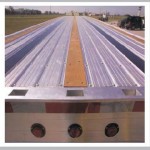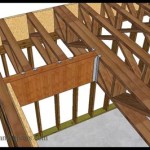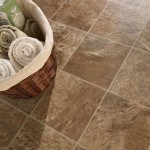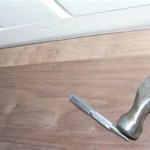Laminate Hardwood Flooring Cost: A Comprehensive Guide
Laminate hardwood flooring has emerged as a popular alternative to traditional hardwood, offering a similar aesthetic at a potentially lower cost. Understanding the intricacies of laminate flooring costs is essential for homeowners planning a renovation or new construction project. This article provides a detailed overview of the factors influencing the price of laminate hardwood flooring, including material costs, installation expenses, and long-term maintenance considerations.
Initially, it's crucial to define laminate hardwood flooring. Unlike solid hardwood, which is made from a single piece of wood, laminate flooring consists of multiple layers fused together. The top layer is typically a photographic applique that replicates the appearance of wood, stone, or tile. This layer is protected by a clear wear layer, which provides resistance to scratches, dents, and fading. Beneath the decorative layer lies a core board, usually made of high-density fiberboard (HDF) or medium-density fiberboard (MDF), which provides stability and impact resistance. A bottom layer, often referred to as the backing, helps to protect the floor from moisture and adds structural integrity.
The cost of laminate hardwood flooring can vary significantly based on several key elements. The quality of materials, the thickness of the wear layer, the core board density, and the brand reputation all contribute to the overall price. Furthermore, geographical location and the complexity of the installation process can also impact the final expenditure.
Key Factors Influencing Laminate Flooring Material Costs
The base cost of laminate hardwood flooring primarily depends on the quality and characteristics of the product itself. This includes the thickness of the laminate, the wear layer, and the core board.
Thickness: Laminate flooring typically ranges in thickness from 6mm to 12mm. Thicker laminates generally provide greater stability and sound insulation. They also tend to feel more substantial underfoot, mimicking the feel of real hardwood. Thicker laminates, predictably, carry a higher price tag than their thinner counterparts. The increased material and manufacturing costs directly translate to a higher purchase price per square foot.
Wear Layer: The wear layer is the protective top coating that determines the floor's resistance to scratches, dents, and fading. Wear layers are measured in mils (thousandths of an inch). A higher mil rating indicates greater durability. Residential laminate flooring often has a wear layer ranging from 8 to 12 mils, while commercial-grade laminate may have a wear layer of 12 mils or higher. A thicker wear layer significantly enhances the longevity and resilience of the flooring, justifying the increased initial cost.
Core Board: The core board forms the structural foundation of the laminate plank. High-density fiberboard (HDF) is denser and more resistant to moisture than medium-density fiberboard (MDF). HDF core boards are typically found in higher-quality laminate flooring and command a premium price. The added resistance to moisture is especially important in areas prone to spills or high humidity, preventing warping and swelling of the floor.
Design and Style: The aesthetic appeal of laminate flooring also plays a role in the cost. Laminate flooring that accurately replicates the grain patterns, textures, and colors of rare or exotic wood species will generally be more expensive than those with simpler or more common designs. Embossed-in-register (EIR) textures, which align the surface texture with the printed image, create a more realistic look but add to the manufacturing complexity and cost. Wide plank laminate flooring may also be more expensive due to the increased material usage and potential for greater waste during manufacturing.
Brand Reputation: Established and reputable laminate flooring brands often command higher prices due to their commitment to quality control, innovation, and customer satisfaction. These brands typically offer warranties on their products, providing added peace of mind for consumers. Investing in a recognized brand can often translate to a longer lifespan for the flooring and potentially reduce the need for premature replacement.
The average cost of laminate hardwood flooring materials can range from approximately $1 to $5 per square foot, depending on these factors. Lower-grade laminates with thinner wear layers and MDF core boards will typically fall at the lower end of the price range, while premium laminates with thicker wear layers, HDF core boards, and realistic designs will be at the higher end.
Installation Costs Associated with Laminate Flooring
In addition to the material costs, the installation process also contributes significantly to the overall expense of laminate hardwood flooring. Installation costs can vary based on several factors, including the size of the project, the complexity of the installation, and the local labor rates.
Subfloor Preparation: Proper subfloor preparation is essential for a successful laminate flooring installation. The subfloor must be level, clean, and dry. Imperfections in the subfloor can lead to unevenness in the finished floor and potentially cause damage to the laminate planks over time. Subfloor preparation may involve leveling uneven areas, patching holes or cracks, and installing a moisture barrier. These additional steps can add to the overall installation cost.
Labor Costs: Labor costs are a significant component of the installation expense. The cost of labor will vary depending on the experience and skill of the installer, as well as the local market rates. Complex installations, such as those involving intricate patterns or custom borders, will typically incur higher labor charges. Removing existing flooring also adds to the labor time, and can increase the cost. The cost per square foot will typically be determined by how much surface area will need to be done. Some installers also do not charge per square foot but by the hour.
Additional Supplies: Besides the laminate planks themselves, additional supplies are needed for the installation process. These may include underlayment, which provides cushioning, sound insulation, and moisture protection; transition strips, which bridge the gap between the laminate flooring and other types of flooring; baseboards, which cover the perimeter of the room; and adhesives or fasteners, depending on the installation method. These supplies can add to the overall cost of the project.
Room Size and Complexity: The size and shape of the room can also influence the installation cost. Larger rooms will require more materials and labor, naturally increasing the expense. Rooms with irregular shapes, such as those with angled walls or curved surfaces, may require more cutting and fitting, which can also add to the labor time. The number of doorways and transitions between rooms can also add to the installation complexity and cost.
Geographic Location: Labor rates and material costs can vary significantly depending on the geographic location. Urban areas typically have higher labor rates than rural areas. Similarly, material costs may be higher in areas where transportation costs are higher. Obtaining quotes from multiple installers in the local area is essential to ensure a fair price.
Installation costs can range from approximately $2 to $6 per square foot, depending on these factors. DIY installation might seem like a cost-saving measure, but it requires a good degree of skill and experience. Improper installation can lead to problems such as buckling, gapping, and moisture damage, potentially resulting in costly repairs or even replacement of the flooring. Hiring a professional installer ensures a proper and long-lasting installation, which can ultimately save money in the long run.
Long-Term Ownership Costs to Consider
The initial purchase and installation costs are just one part of the equation. Long-term ownership costs, including maintenance, repairs, and eventual replacement, should also be considered when evaluating the overall cost of laminate hardwood flooring.
Maintenance: Laminate flooring is generally easy to maintain. Regular sweeping or vacuuming is sufficient to remove dirt and debris. Occasional damp mopping with a laminate-specific cleaner can help to remove stains and spills. Unlike hardwood flooring, laminate does not require waxing or refinishing. However, using the wrong cleaning products or excessive moisture can damage the flooring. Investing in appropriate cleaning supplies and following the manufacturer's recommendations for maintenance can extend the lifespan of the floor.
Repairs: While laminate flooring is relatively durable, it is not impervious to damage. Scratches, dents, and chips can occur, especially in high-traffic areas. Minor scratches can often be repaired with commercially available repair kits. More significant damage may require replacing individual planks. Having extra planks on hand from the initial installation can make repairs easier and ensure a color match. Replacing damaged planks can be a relatively straightforward process, but it may require some basic carpentry skills or hiring a professional.
Lifespan and Replacement: The lifespan of laminate flooring can vary depending on the quality of the product and the level of maintenance. With proper care, laminate flooring can last for 10 to 20 years or even longer. However, eventual replacement may be necessary due to wear and tear, water damage, or changes in aesthetic preferences. The cost of replacing laminate flooring will depend on the same factors as the initial installation, including the material costs, labor costs, and subfloor preparation.
Impact on Home Value: While not a direct cost, the choice of flooring can impact the value of a home. Laminate flooring, when well-maintained and appropriately chosen for the style of the home, can be an attractive feature for potential buyers. Replacing old or worn-out flooring with new laminate can improve the overall appearance of the home and potentially increase its market value. However, the impact on home value will depend on the quality of the laminate, the overall condition of the home, and the local real estate market.
Accurately assessing the total cost of laminate hardwood flooring necessitates considering material costs, installation expenses, and long-term maintenance considerations. While laminate flooring may offer a lower initial cost compared to solid hardwood, understanding the potential for repair and replacement costs over time is crucial for making an informed decision. Selecting a high-quality laminate, investing in proper installation, and following recommended maintenance practices can maximize the lifespan of the flooring and minimize long-term expenses.

Laminate Vs Hardwood Flooring Difference And Comparison Diffen

2024 Laminate Flooring Installation Cost Guide Angi

Cost To Install Laminate Flooring A Complete Guide 2024 Forbes Home

Fixr Com Laminate Vs Hardwood Flooring Pros Cons Comparisons And Costs

2024 Laminate Flooring Installation Cost Guide Angi

Average Hardwood Flooring S In 2024 Forbes Home

How Much Does Hardwood Flooring Cost 2024 Guide

Cost To Install Laminate Floors The Home Depot

How To Choose The Right Wooden Flooring Cost Maintenance Lifespan

Laminate Vs Hardwood Flooring Difference And Comparison Diffen
Related Posts








